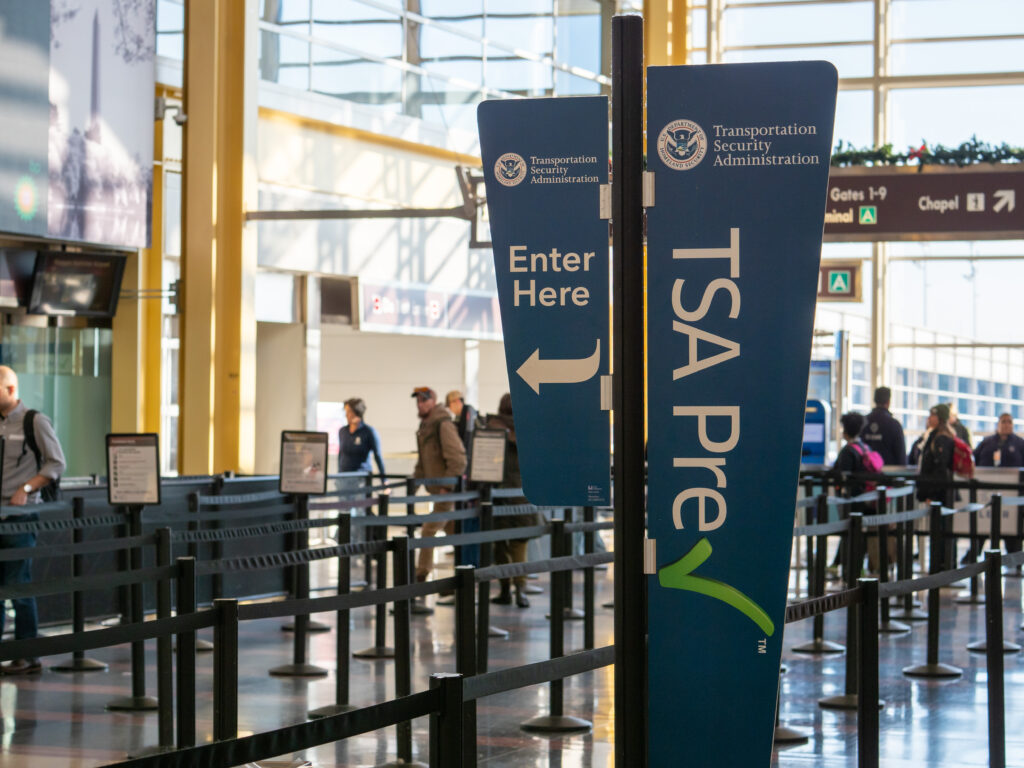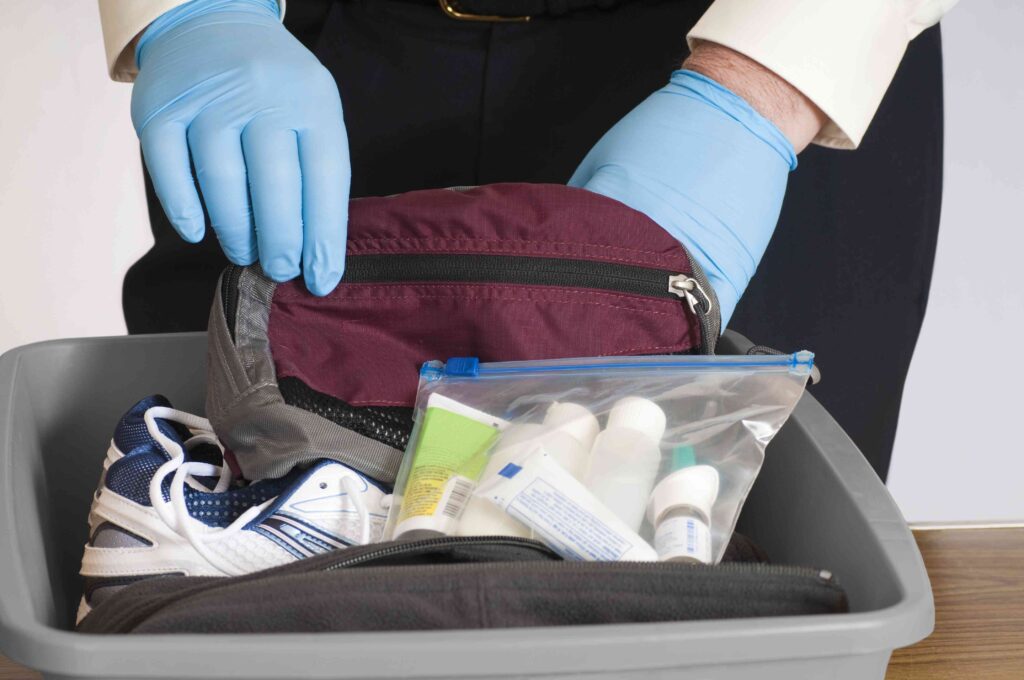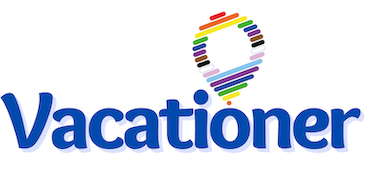TSA Travel Tips for an Efficient Checkpoint Experience
Despite reports that Vacationers are scaling back spring break plans in an effort to save money, travel volume is still expected to exceed pre-pandemic levels. To help avoid the spring break crunch at the airports, the Transportation Security Association (TSA) is offering some tips to ensure the most efficient checkpoint experience possible.
The spring break travel season begins around Feb. 17 and continues through April 21. TSA anticipates that its Transportation Security Officers (TSOs) will screen increasing numbers of passengers at airport checkpoints as travel volumes may exceed pre-pandemic levels.
“In January, we experienced our first full month where travel volumes exceeded the same month in 2019. We fully expect to see an upward trend in travel volumes throughout 2023, including during the spring break period,” said TSA Administrator David Pekoske. “We coordinate closely with airports and air carriers to prepare for the projected increase in travel volumes and we expect to meet our wait time standards of 30 minutes or less in standard lanes and 10 minutes or less in TSA PreCheck lanes. However, there may be some situations where the capacity of a checkpoint is exceeded.”

TSA continues to make progress on investments and policies that enhance security, advance checkpoint efficiency and improve the passenger experience, including:
- Maintaining a near constant recruiting effort to hire and train new officers on the frontline, needed to accommodate growing passenger volumes.
- Increasing signage, public awareness and civil penalties of up to nearly $15,000 in an effort to reduce the number of firearms at TSA checkpoints.
- Investing in technology deployments that improve identity verification, prohibited items detection and an algorithm update on the Advanced Imaging Technology (AIT) that will substantially reduce false alarms and the number of unnecessary pat-downs.
TSA recommends the following top six travel tips to help spring break travelers arrive prepared for the most efficient TSA checkpoint experience:
Tip 1: Pack smart – start with an empty bag and ensure you do not have any prohibited items. Do not attempt to bring a firearm through a TSA checkpoint; doing so compromises the safety and security of other passengers and officers in the checkpoint. Passengers who attempt to bring a firearm through a checkpoint will receive a civil penalty (fines may be as high as $15,000) and lose eligibility for TSA PreCheck. Additionally, local law enforcement will be called and because these passengers may present additional risk beyond the firearm, they may receive enhanced screening. Other prohibited items include explosives, flammables, knives, razors, replica weapons and more. To avoid delays, passengers should view TSA’s “What Can I Bring?” page and begin packing with a bag that is empty.
Tip 2: Remember the 3-1-1 Liquids Rule. Passengers may bring a quart-sized bag of liquids, aerosols, gels, creams and pastes through the checkpoint as long as each item is 3.4 ounces or less. Liquids over 3.4 ounces must be packed in a checked bag. Sunscreen in a container larger than 3.4 ounces is commonly available but is not considered to be medically necessary as a carry-on item. Larger quantities of sunscreen are allowed in checked bags. Any liquid, aerosol, gel, cream or paste that alarms during screening will require additional screening.
Alcoholic beverages with more than 24% but not more than 70% alcohol are limited in checked bags to five liters (1.3 gallons) per passenger and must be in unopened retail packaging. Alcoholic beverages with 24% alcohol or less are not subject to limitations in checked bags. For carry-on bags, passengers are limited to containers of 3.4 ounces or less that can fit comfortably in one quart-sized, clear, zip-top bag. FAA regulations prohibit travelers from consuming alcohol on an aircraft unless served by a flight attendant. Additionally, flight attendants are not permitted to serve a passenger who appears to be intoxicated.
Medically necessary liquids, gels and aerosols over 3.4 ounces are allowed in reasonable quantities, but they must be declared at the checkpoint for inspection. TSA allows one liquid hand sanitizer container up to 12 ounces per passenger in carry-on bags until further notice. These containers will need to be screened separately, which will add some time to the checkpoint screening experience.

Tip 3: Enroll in TSA PreCheck. First trip without the parents? Get your own TSA PreCheck membership. In January 2023, 92% of TSA PreCheck passengers waited less than five minutes at TSA checkpoints nationwide. Traveling with the kids? Children 12 and under may join a parent/guardian with TSA PreCheck in the dedicated lanes. Most new enrollees receive a Known Traveler Number (commonly referred to as “KTN”) within five days, and membership lasts for five years. The enrollment fee for five years is $78; online renewals are $70. Don’t delay, enroll in TSA PreCheck today.
Tip 4: Ask TSA before you travel. Contact TSA’s travel security experts over social media by sending a message to @AskTSA on Twitter or Facebook Messenger. Passengers may also send a text directly to 275-872 (“AskTSA”) on any mobile device. An automated virtual assistant is available 24/7 to answer common questions and AskTSA staff is available from 8 a.m. to 6 p.m. EST daily, including holidays and weekends for more complicated questions. Travelers may also reach the TSA Contact Center at 866-289-9673 from 8 a.m. to 11 p.m. EST on weekdays and 9 a.m. to 8 p.m. ESTon weekends/holidays. An automated service is available 24 hours a day, seven days a week.
Tip 5: Arrive early and carry on kindly. Spring break travelers should give themselves plenty of time to account for traffic, parking, rental car returns, airline check-in, security and making any airport purchases before boarding a flight. Avoid consuming excessive amounts of alcohol prior to boarding, as flight attendants and gate agents may deny boarding to intoxicated passengers. Passengers who engage in unruly behavior at the checkpoint or inflight may face substantial penalties and possible prosecution on criminal charges.
Tip 6: Be checkpoint ready. Arrive at the checkpoint lane with a mobile or printed boarding pass and valid ID readily available. When approaching the screening area, remember to empty pockets and place the contents in a bin or carry-on bag. Those without TSA PreCheck must remove large electronics and 3-1-1 liquids from carry-ons. All travelers will be asked to remove outerwear prior to screening. Listen closely and follow instructions of the TSA officer for guidance through the screening process.
TSA encourages all passengers to remain vigilant. If You See Something. Say Something. Those traveling abroad for spring break should check the U.S. Customs and Border Protection Know Before You Go page to learn about required documentation.
For more information about TSA screening procedures, visit the customer service page and read the frequently asked questions or watch TSA’s travel tips videos.



